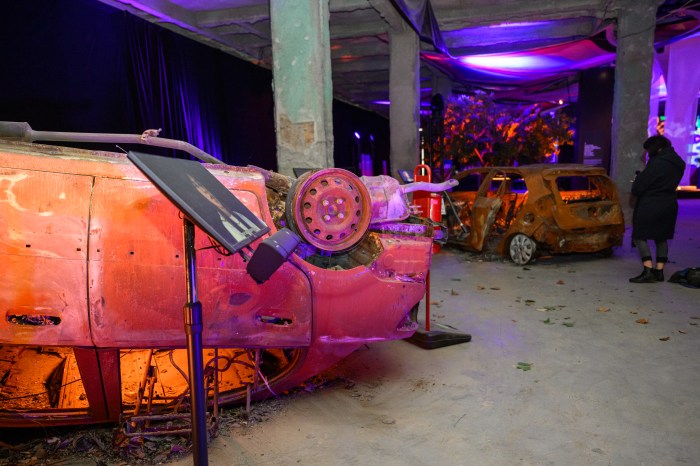By Herbert Goldstone
Two weeks before the end of the year, on Dec. 17, to be exact, the centennial of a historic event that changed the character of the human race forever will be celebrated.
It was on Dec. 17, 1903, in the tiny rural community of Kitty Hawk, N.C., that Wilbur and Orville Wright, two brothers who operated a small bicycle business in Dayton, Ohio, carried out mankind’s first powered flight in a rickety-looking contraption that bore no resemblance to today’s giant jet-powered aircraft.
Long Island, although a long way from North Carolina, has played a key role in the development of aviation and will have a big hand in one of the major events of the centennial, the presentation of a full-scale replica of the Wrights’ primitive flying machine to the National Park Service at Floyd Bennett Field, where so much aviation history was made.
Talk about “one small step,” as Neil Armstrong put it in the first moon landing in 1969, just 63 years later! The first flight by Orville Wright that cold December morning in 1903 was 20 feet long and less than 10 feet off the ground.
Later that day, Wilbur flew the ungainly flyer a distance of 852 feet.
The flyer built up take-off speed, such as it was, by running along a short wooden track. The “pilot” laid on his stomach, guiding the ungainly cloth-covered craft, with two thin wooden propellers pushing from behind and the double rudder in front of him.
Another aviation pioneer, Samuel Langley, missed his chance to beat the Wrights by a few days. Because of a launching accident, the airplane he developed failed on its first attempt a few days before the successful Wright flight.
Our space program, by the way, set Uncle Sam back millions of dollars. The Wright brothers’ pioneering flyer in 1903 cost them about $1,000 according to historians, including the campsite they built for the project at Kitty Hawk and their round-trip fare between Dayton and Kitty Hawk.
Two key events gave Long Island a lasting place in the history of aviation.
The morning of May 20, 1927, Charles A. Lindbergh took off from Roosevelt Field. the site of the present Roosevelt Field Mall, on his historic trans-Atlantic solo flight to Paris.
In the 1960s, engineers at the Grumman Aviation plant in Bethpage designed and built the LEM. The fragile lunar lander was carried into space aboard an Apollo rocket, then while in orbit around the moon, separated from the rocket to land Armstrong and Buzz Aldrin on the Sea of Tranquillity.
Back in the 1930s, before World War II, the huge ocean liners that crossed the Atlantic from New York to Europe were supplemented and then replaced by the big, graceful multi-engine Pan American clippers that took off from Flushing Bay to start their trans-Atlantic flights.
Victory in World War II came about in no small part because of the war planes built for the Army, Navy and Marine Corps at Long Island’s two major aircraft plants, Grumman and Republic Aviation in Farmingdale.
An active New York State chapter of the Experimental Aircraft Association is building the full-scale replica of the Wright flyer.
According to the EAA chapter coordinator, Michaelene Carpenter of Shirley, L.I., several Long Island firms and individuals are helping the project.
Full-size plans for the aircraft’s ribs, wing tip bow, pilot support framework and the engine support structure were developed by the CADAM computer program in Bethpage.
All the wood needed for the project, she reported, was donated by the J & A Lumber Company of Ronkonkoma, with ribs and other parts cut and color coded by woodmaker Fred Mahken. The rear rudders and rear rudder outriggers were constructed by students of the Western Board of Cooperative Education Services.
EAA Chapter 656 built the propellers and EAA Chapter 3 machined the drive sprockets for the propeller and bushings for the rails.
The forward rudder is being constructed by students of the college of Aeronautics at LaGuardia Airport. Three EAA chapters furnished the fabric covering the flyer.
As a finishing touch, Concordia Industries of Garden City is making plaques with the names of all those who have contributed to the project, for permanent display with the flyer.
No accounts of Long Island’s place in aviation history would be complete without mentioning its airports. LaGuardia Airport, John F. Kennedy Airport and MacArthur Airport are key units in the nation’s aviation network. Who remembers that JFK was called Idlewild Airport when it opened years ago?
And, of course, where the Hofstra College campus and shopping centers stand today, there was Mitchell Field, for years a major link in the U.S. Air Forces aviation network.
DC 3s and big twin-tailed troop carrying C-119s used to fill the sky over Long Island.
If there’s an area that deserves the title “cradle of aviation,” Long Island is it.































